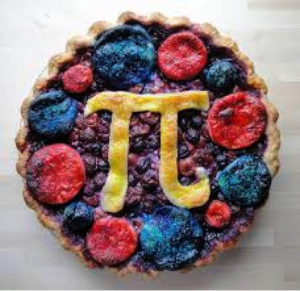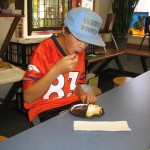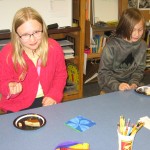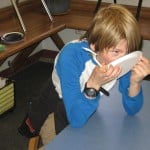
Following Pi Day, we began working with circles by finding a circle’s diameter, radius, circumference and center. We discussed the relationship between a circle’s radius and its diameter (diameter = radius x 2 or radius = 1/2 diameter). Students were then challenged to answer this question: if you know your circle’s diameter, how can it help you find the circumference? We thought back to the story and many students were able to make the connection that it takes a little more than 3 diameters to make the circumference, 3.14 diameters to be more precise. We tested this on our circles and it works! Our circle’s diameter was 6.5 inches. We multiplied 6.5 x pi (3.14) to get 20.41 inches for the circumference. It turned out to be very useful to know the diameter, so that we didn’t actually have to measure the circumference (curved edges are mighty difficult to measure). We spent a day measuring a variety of round objects (diameters and circumferences). We used inches as our unit and reviewed reading the marks on rulers; we measured to the closest 1/4 of an inch (a few ambitious students wanted to measure to the closest 32nd of an inch). We then tested the accuracy of our measurements. Using calculators, did our diameters x 3.14 equal the circumferences? This step involved renaming our fractions (3 and 1/2 inches) as decimals (3.5 inches). Students love testing their answers and are thrilled when their results are accurate.
Our final day of circles was learning how to use compasses (which is harder than it looks). Students enjoy using new tools and having time to practice and experiment. All in all, our week of circles was a rich learning experience.
-Kitty






